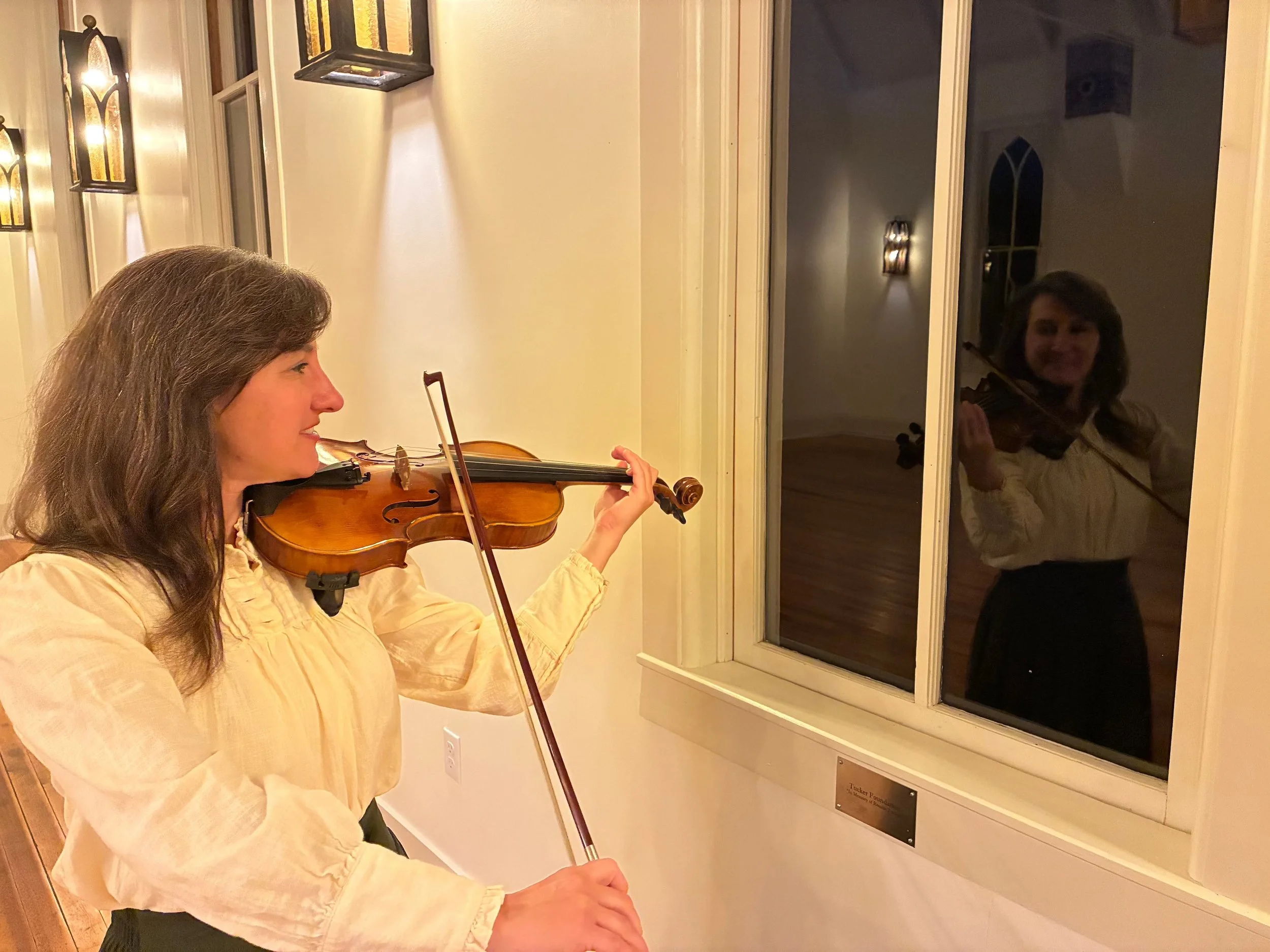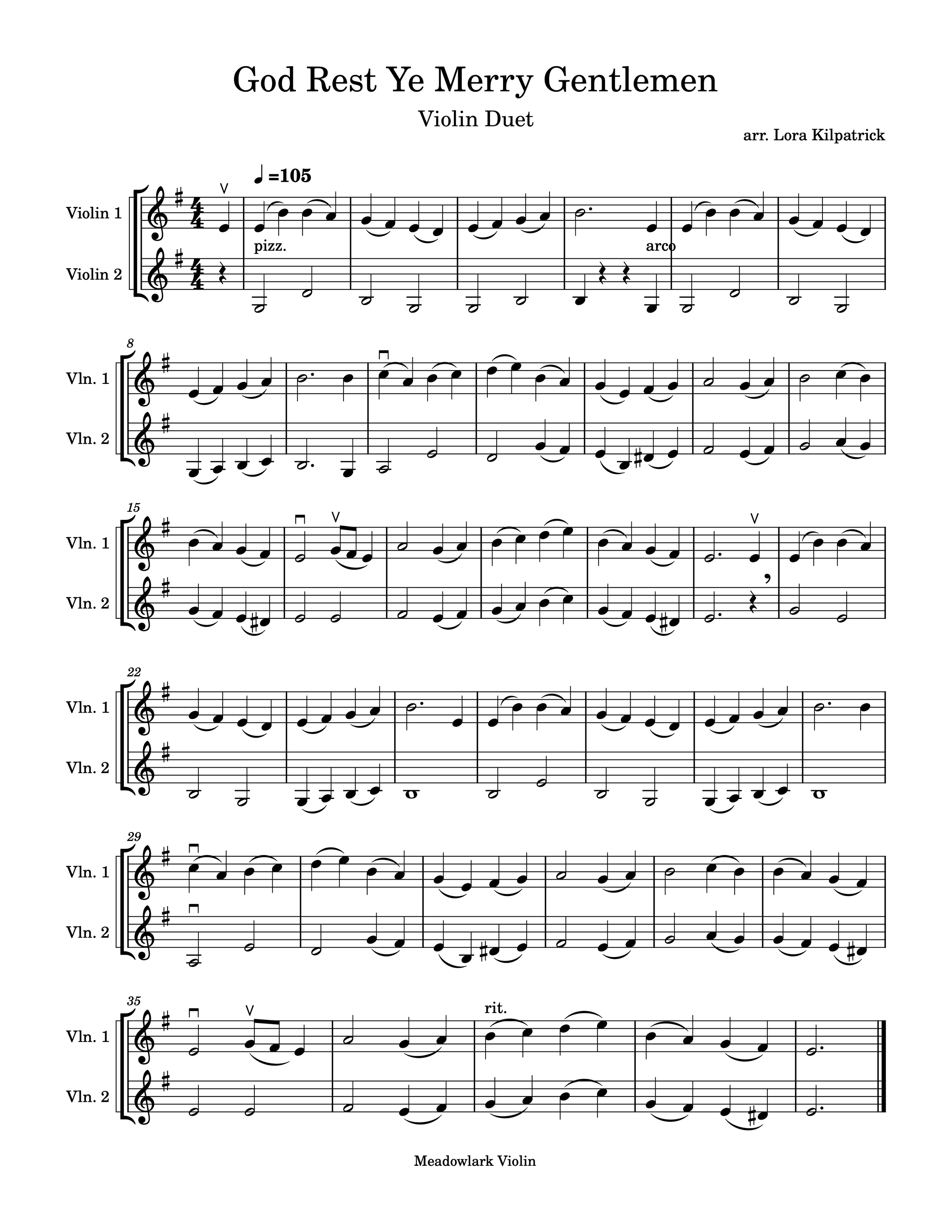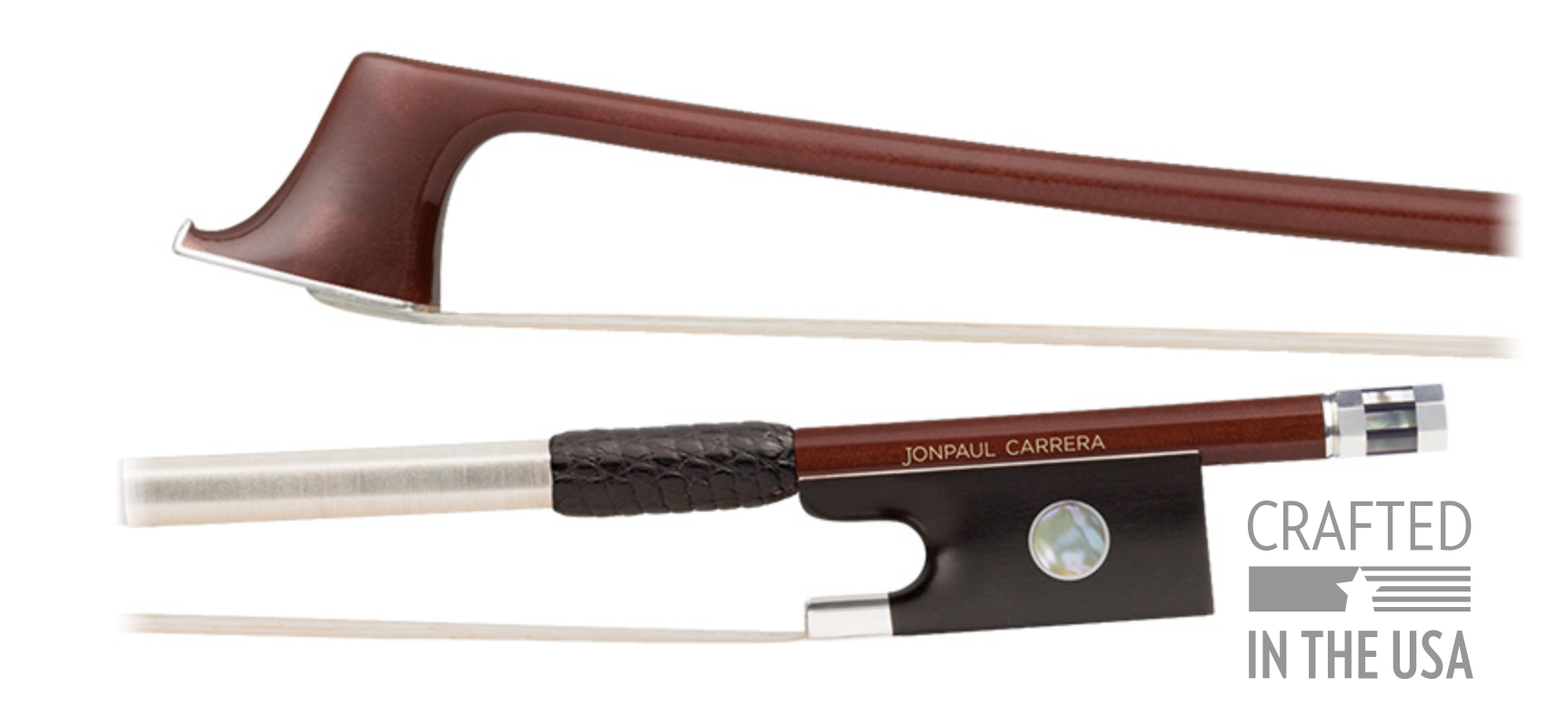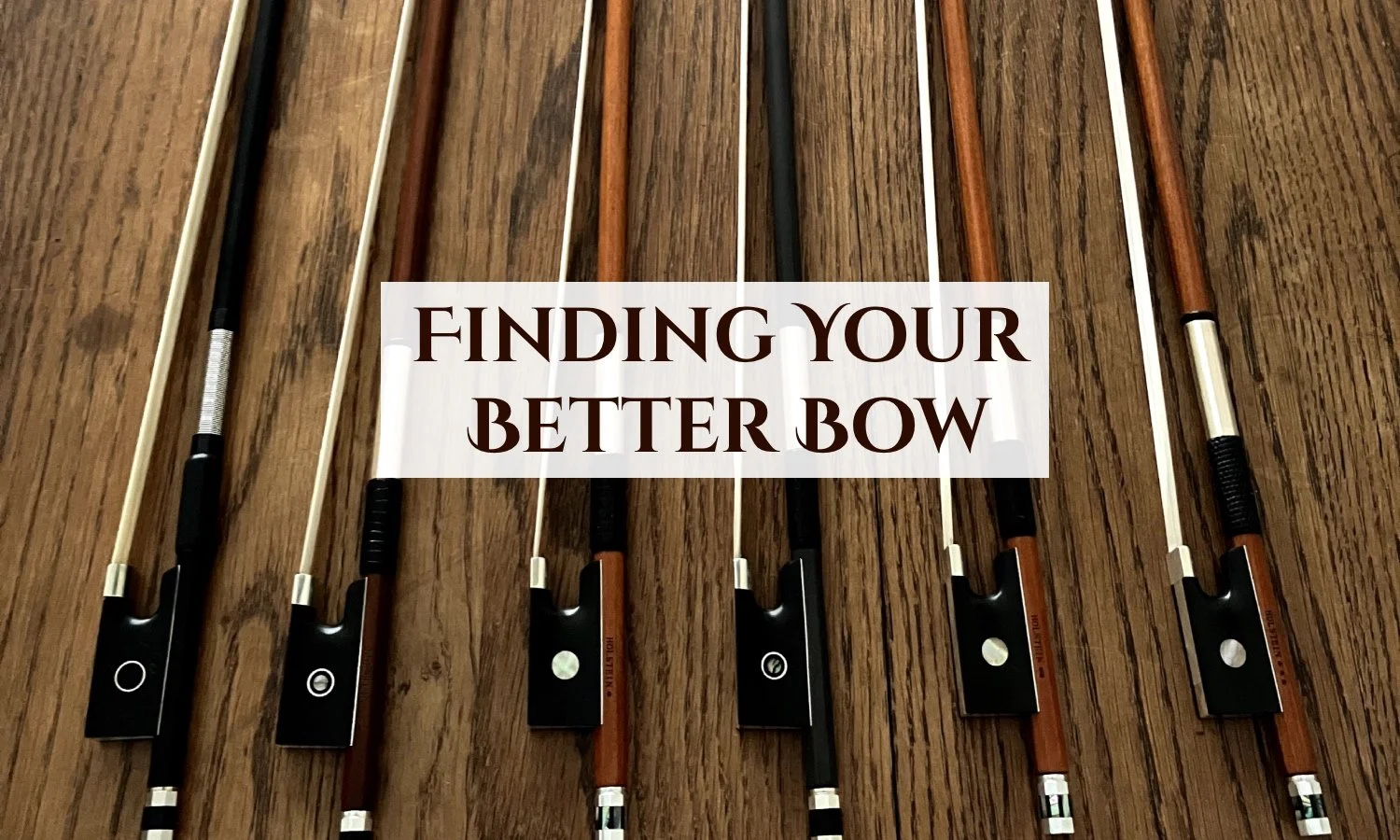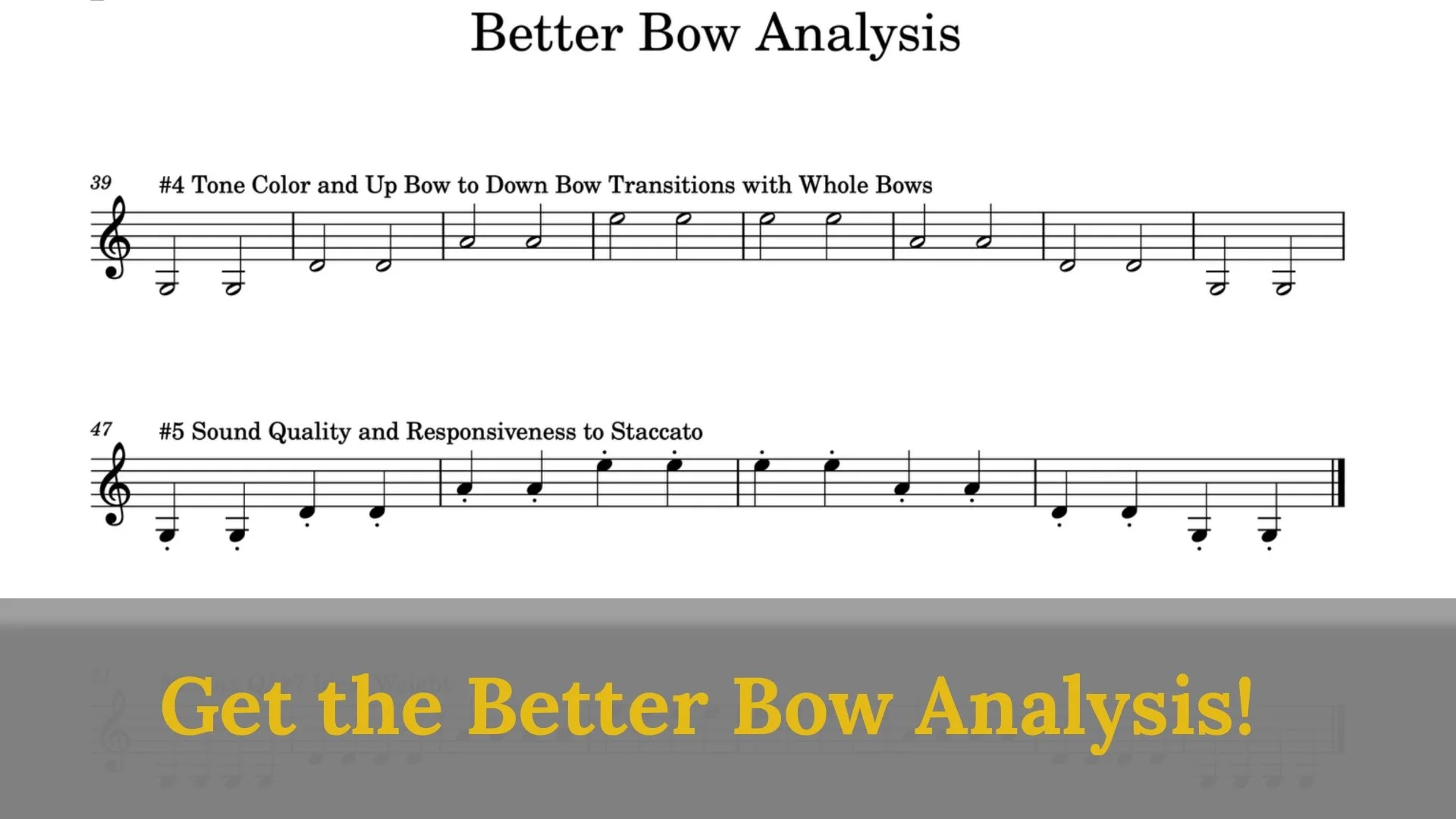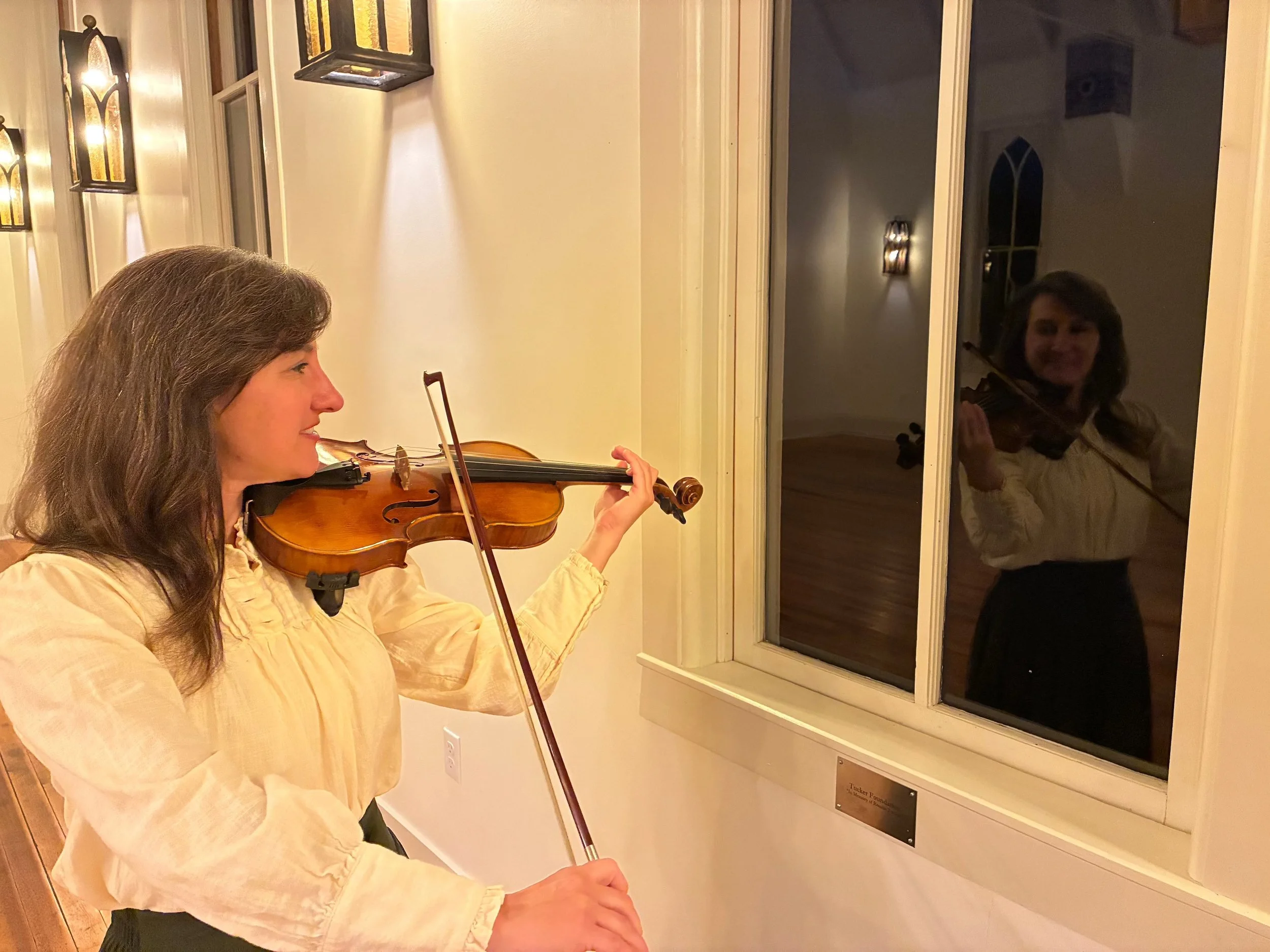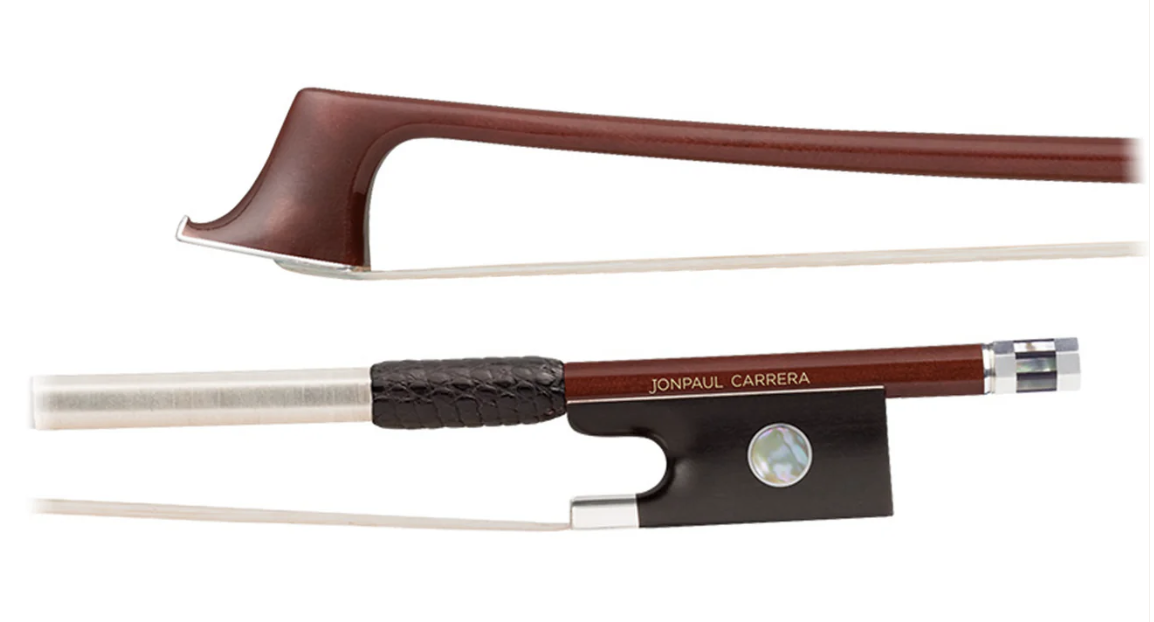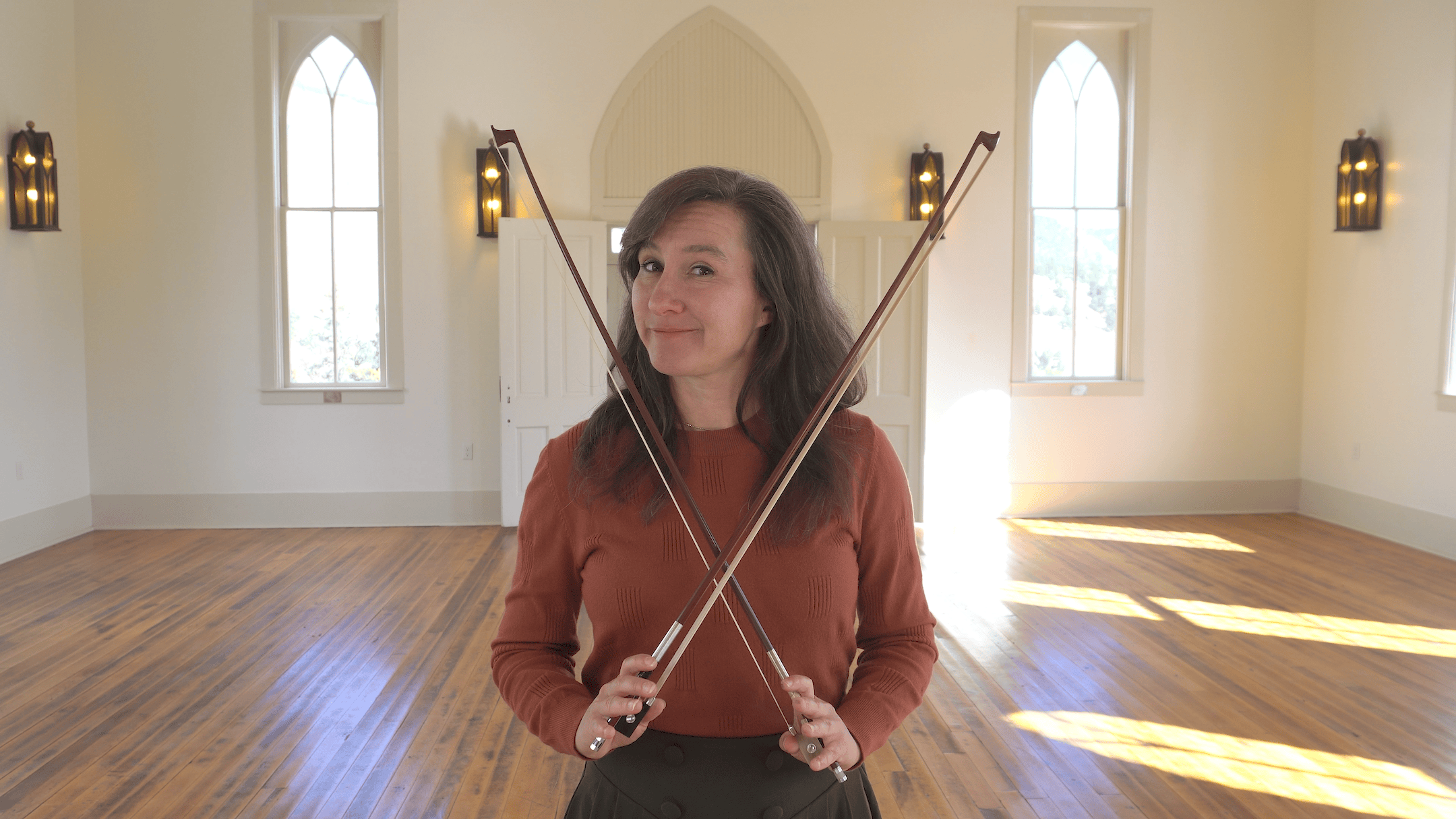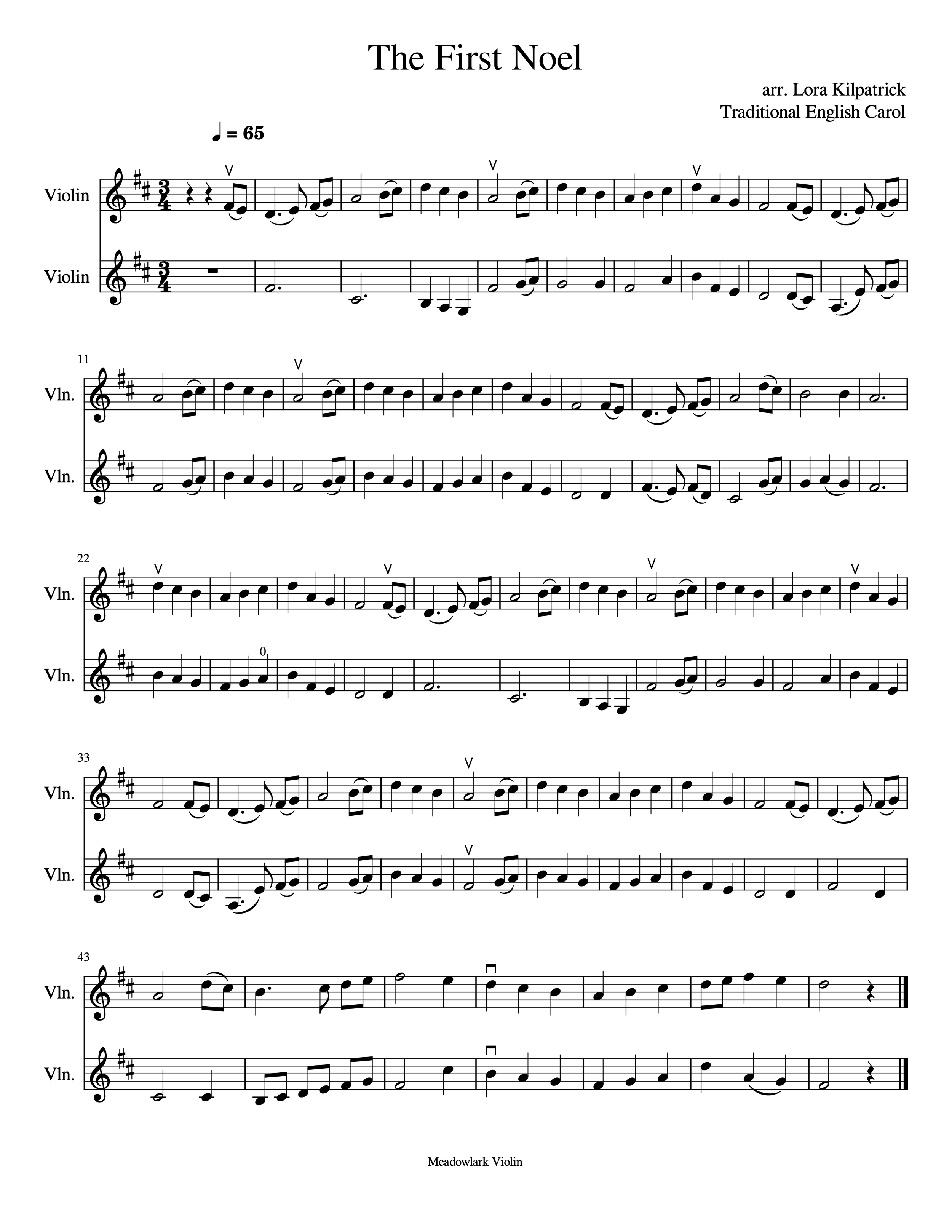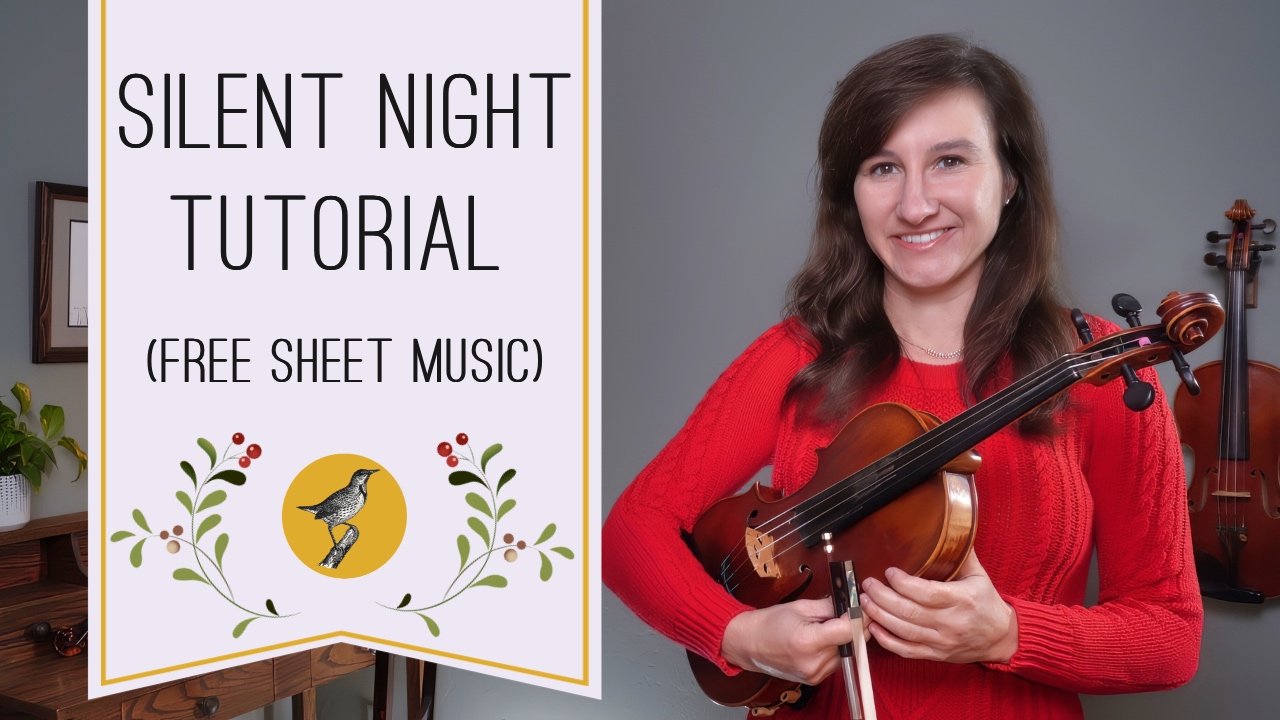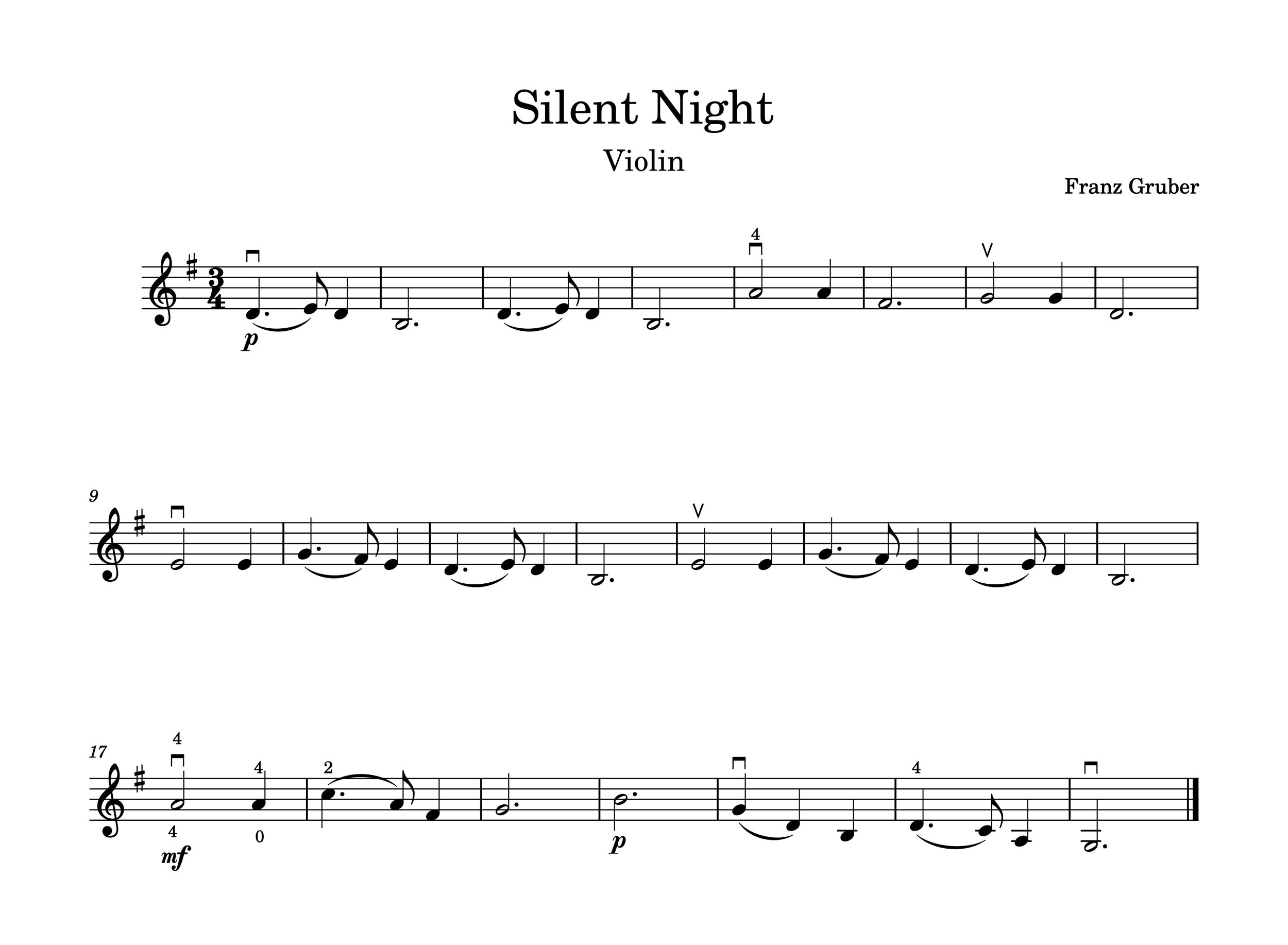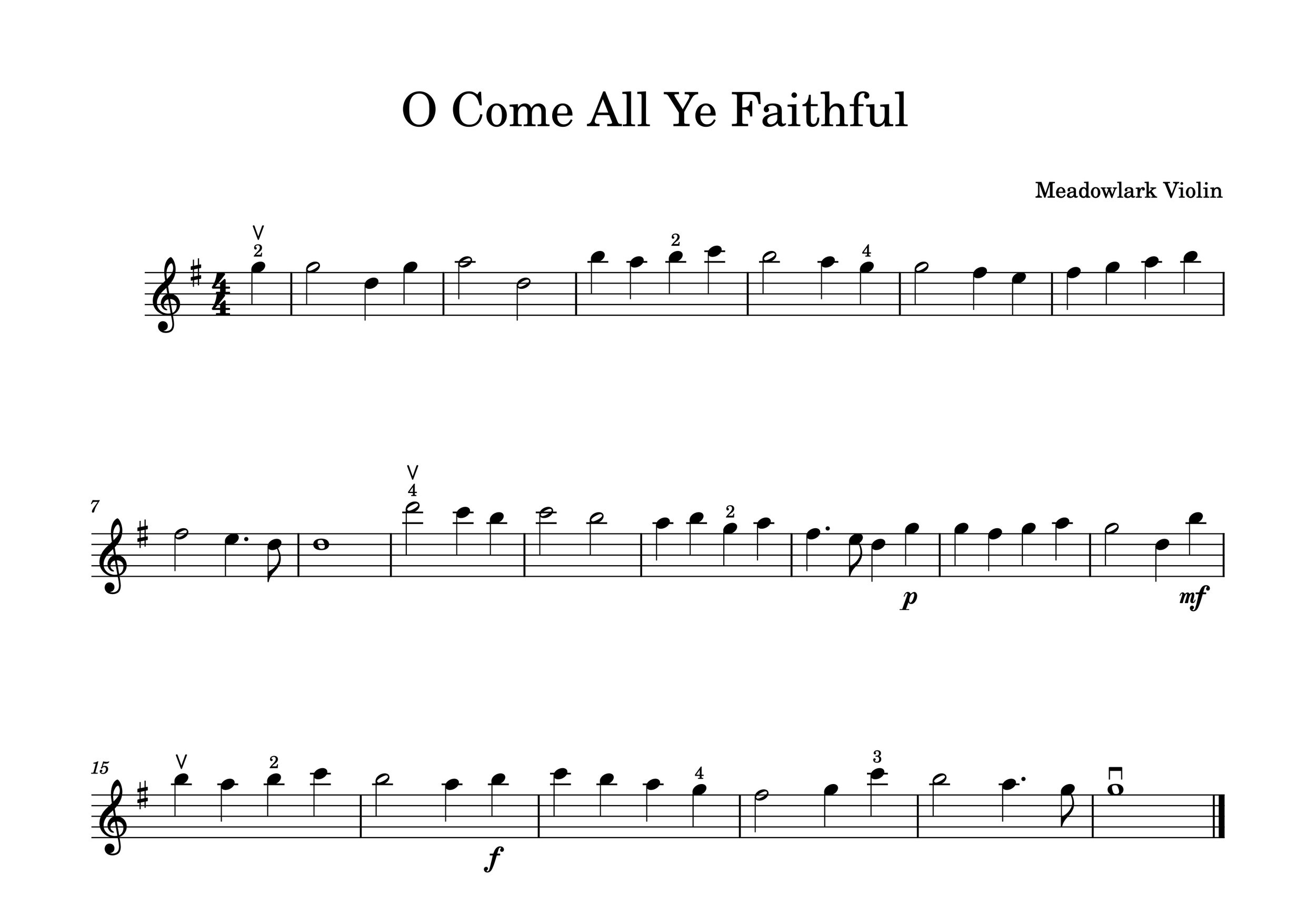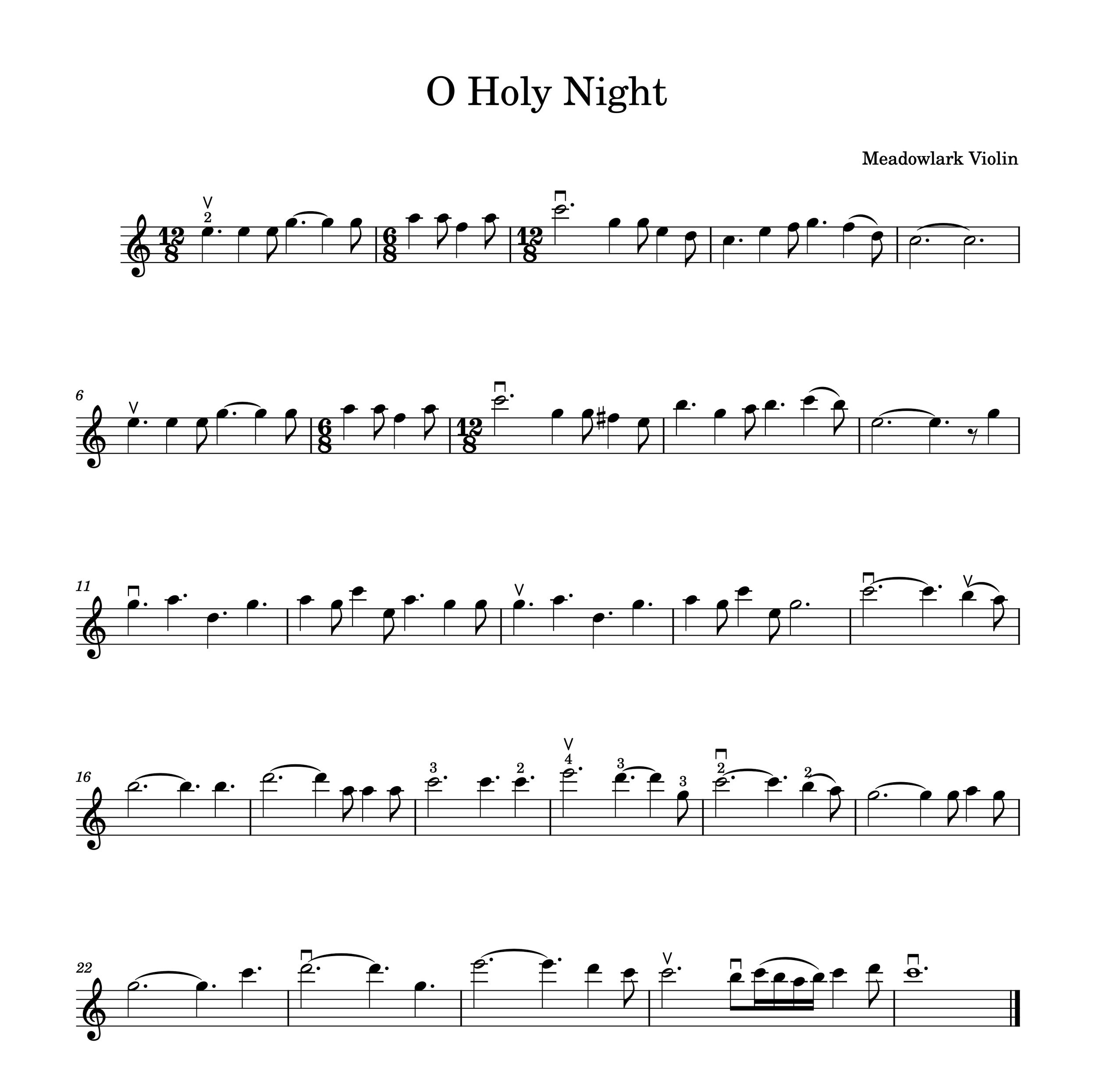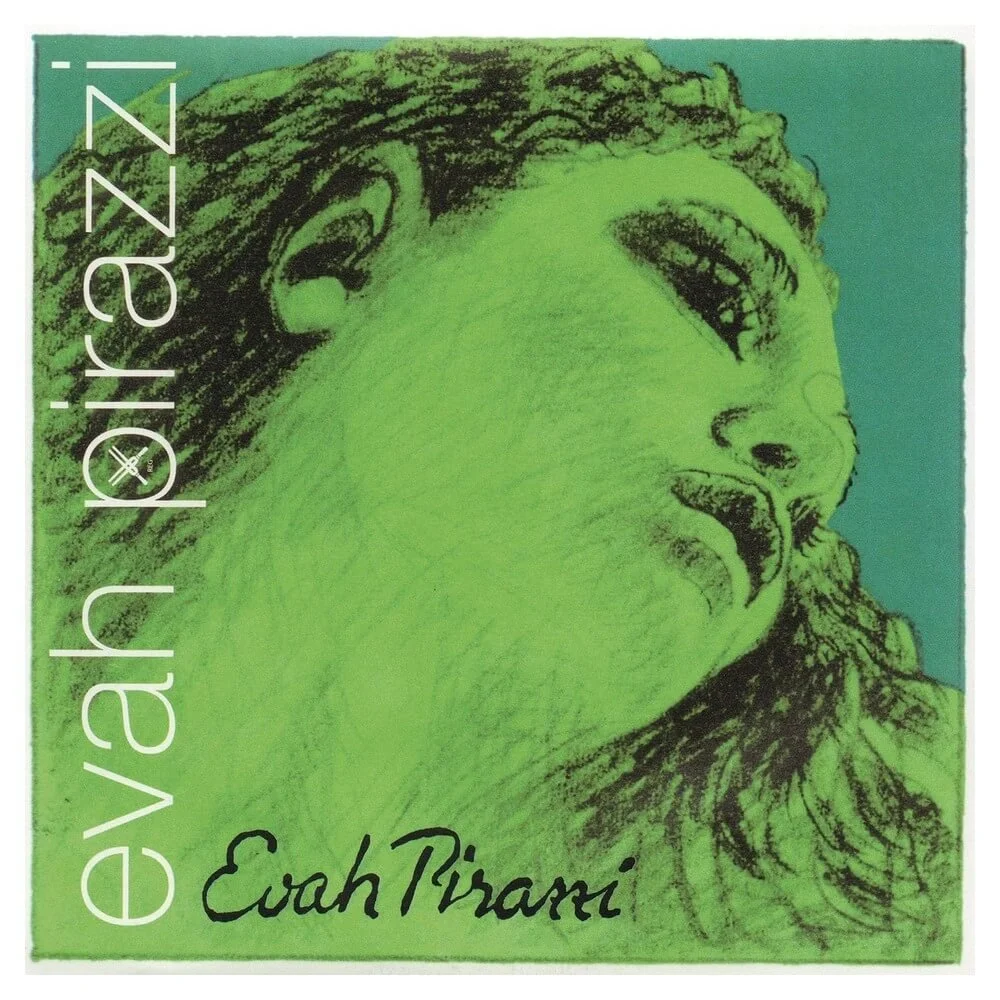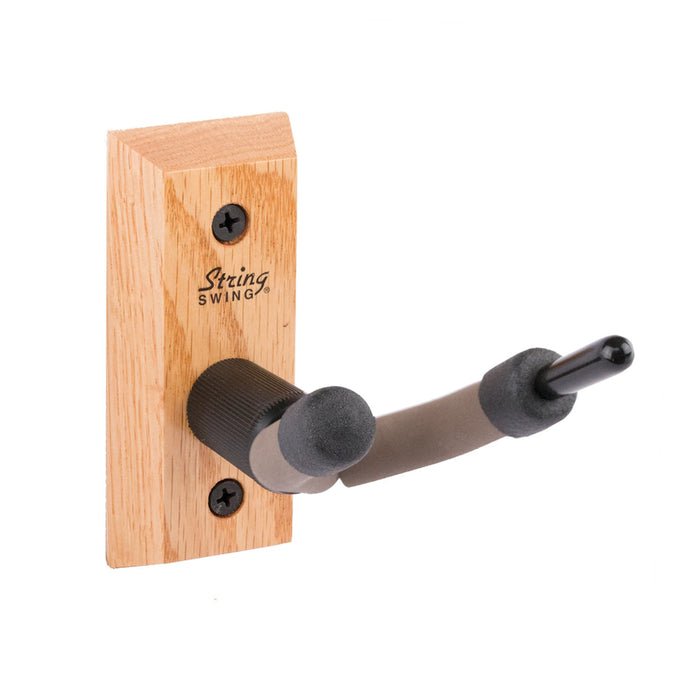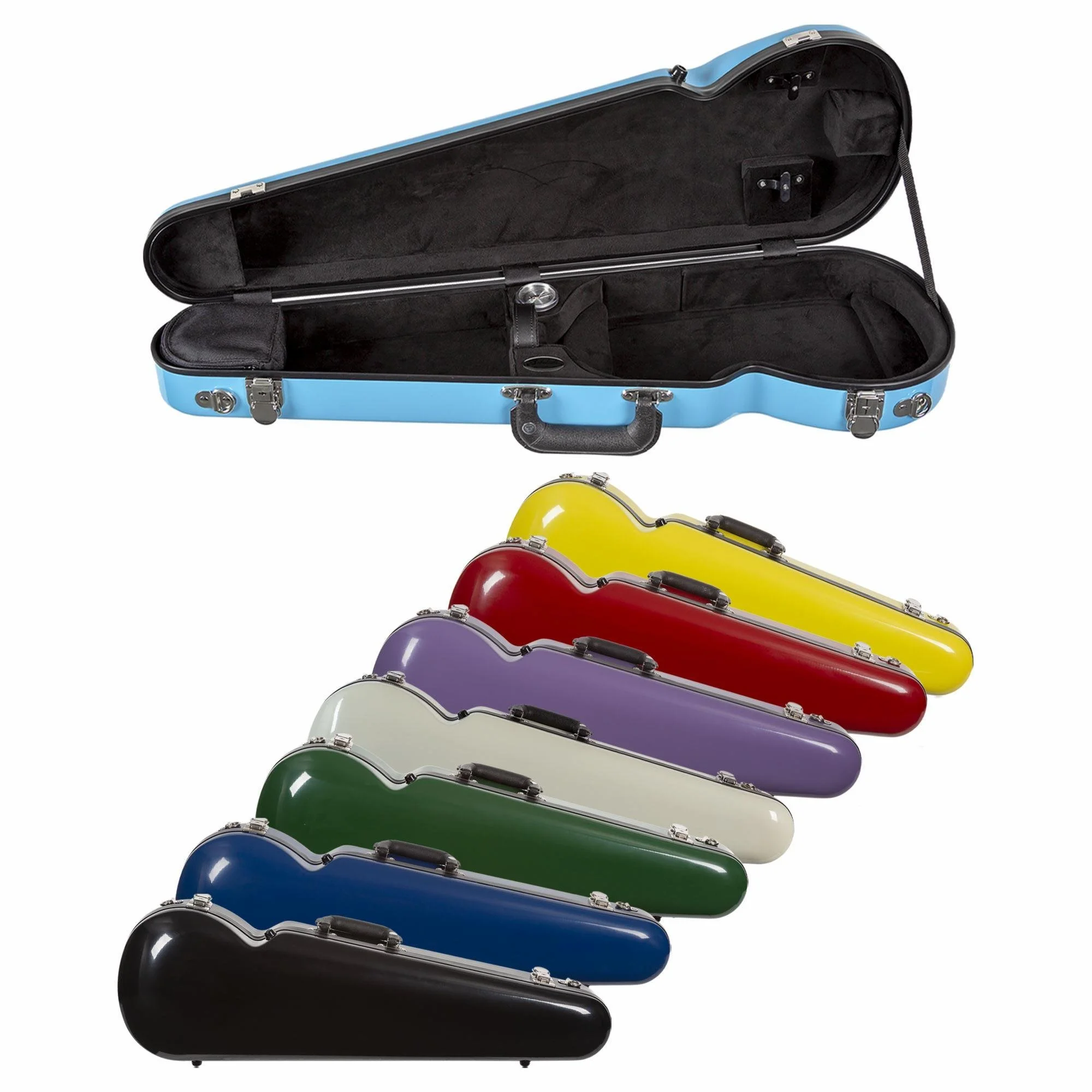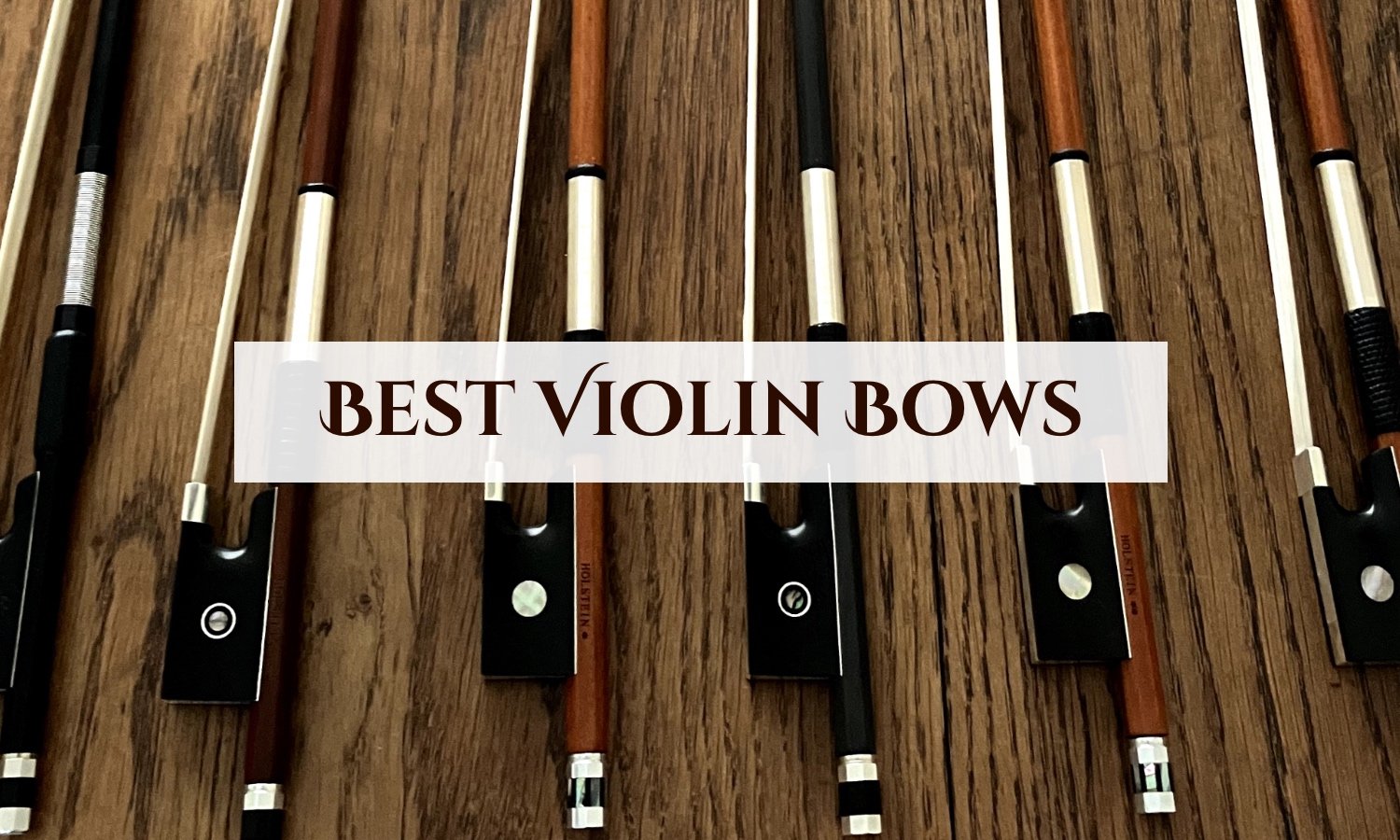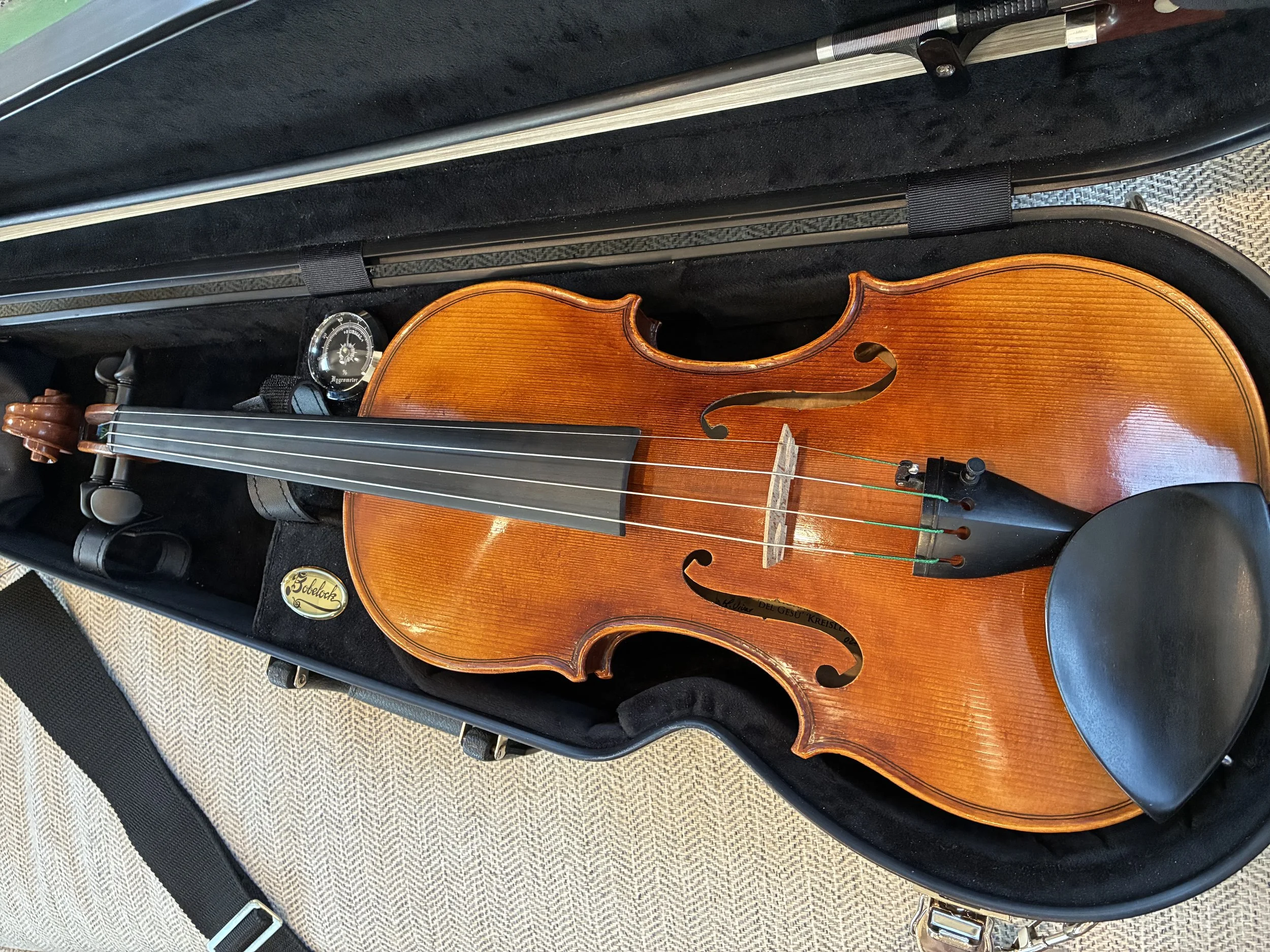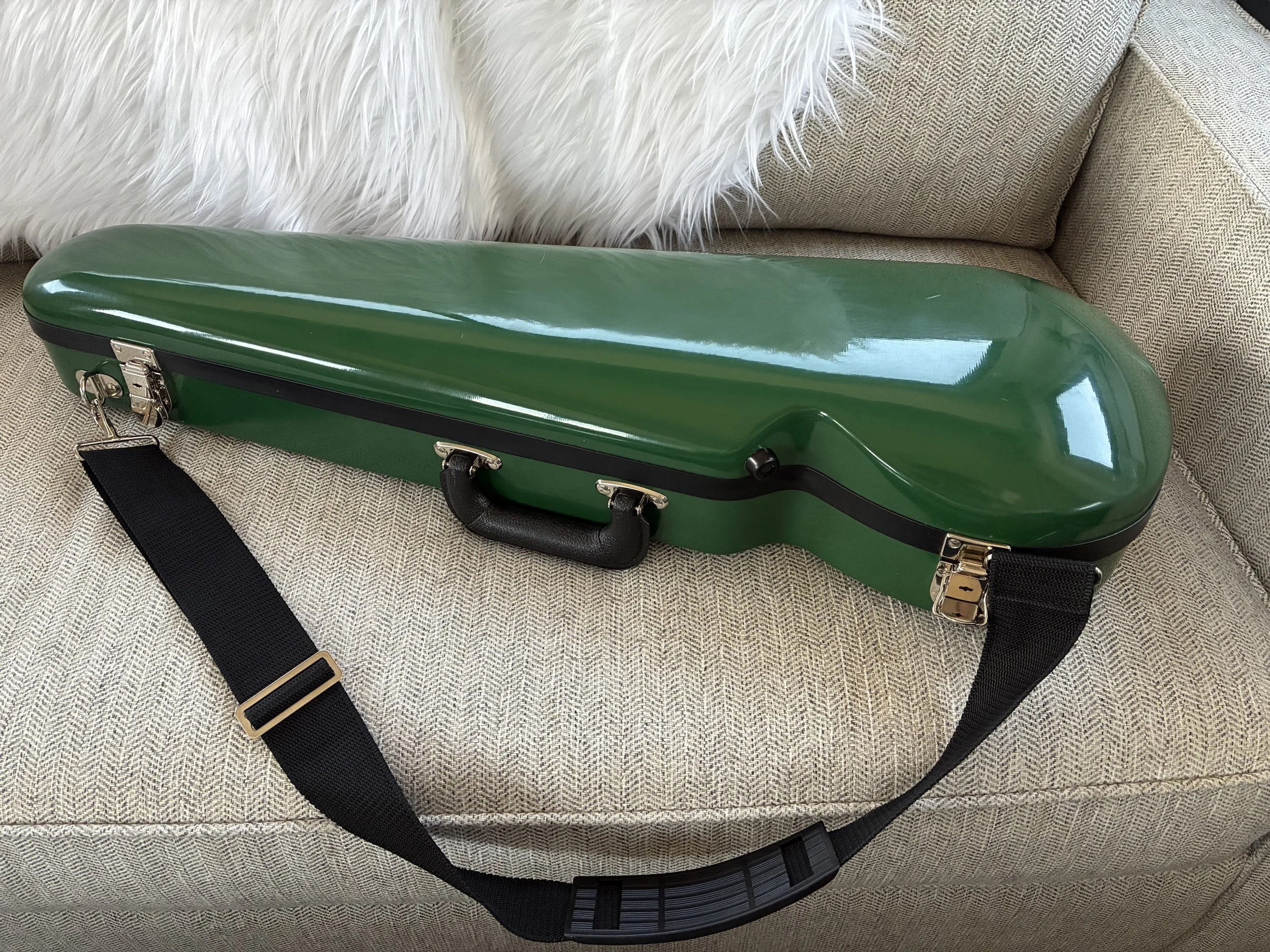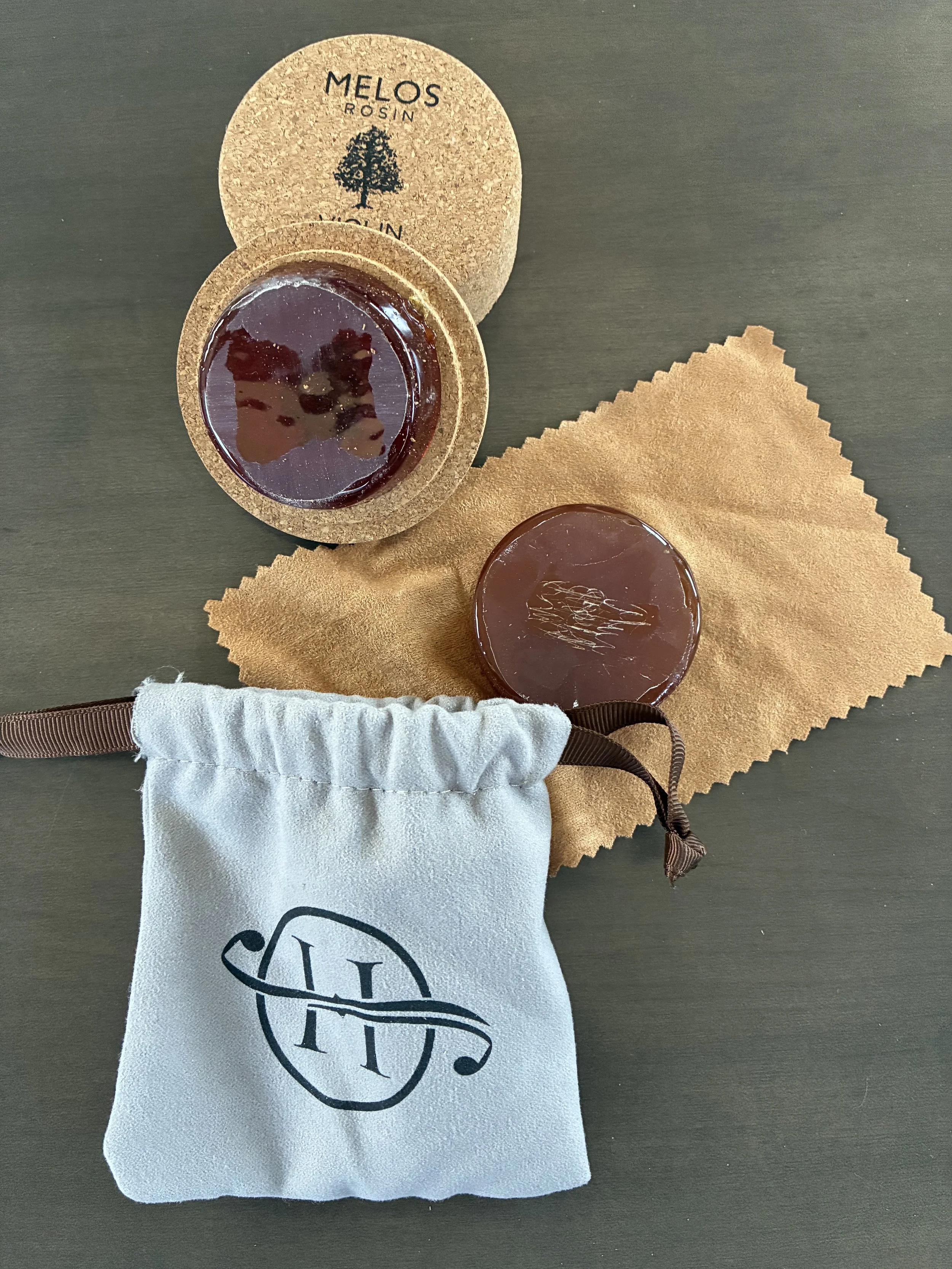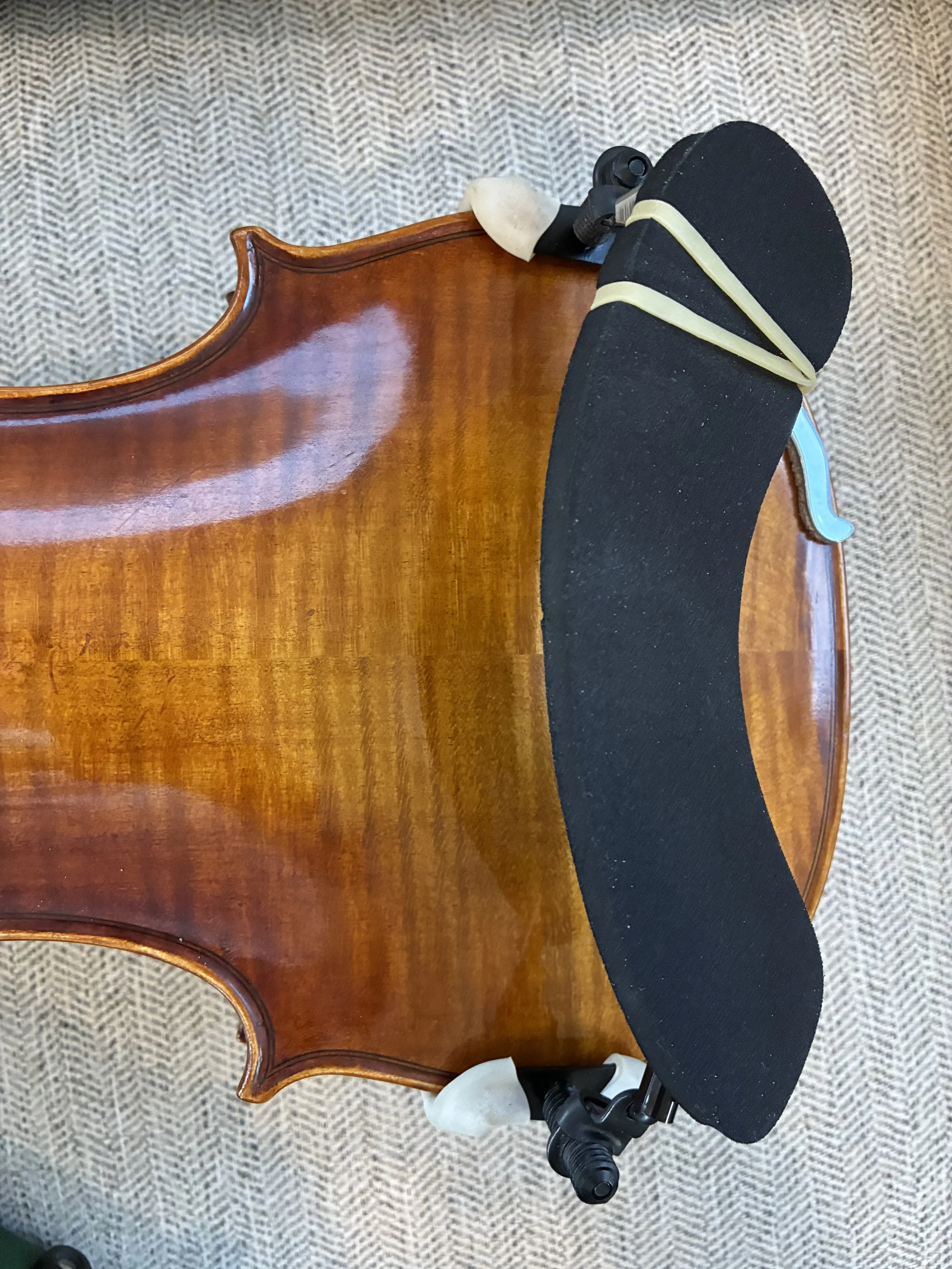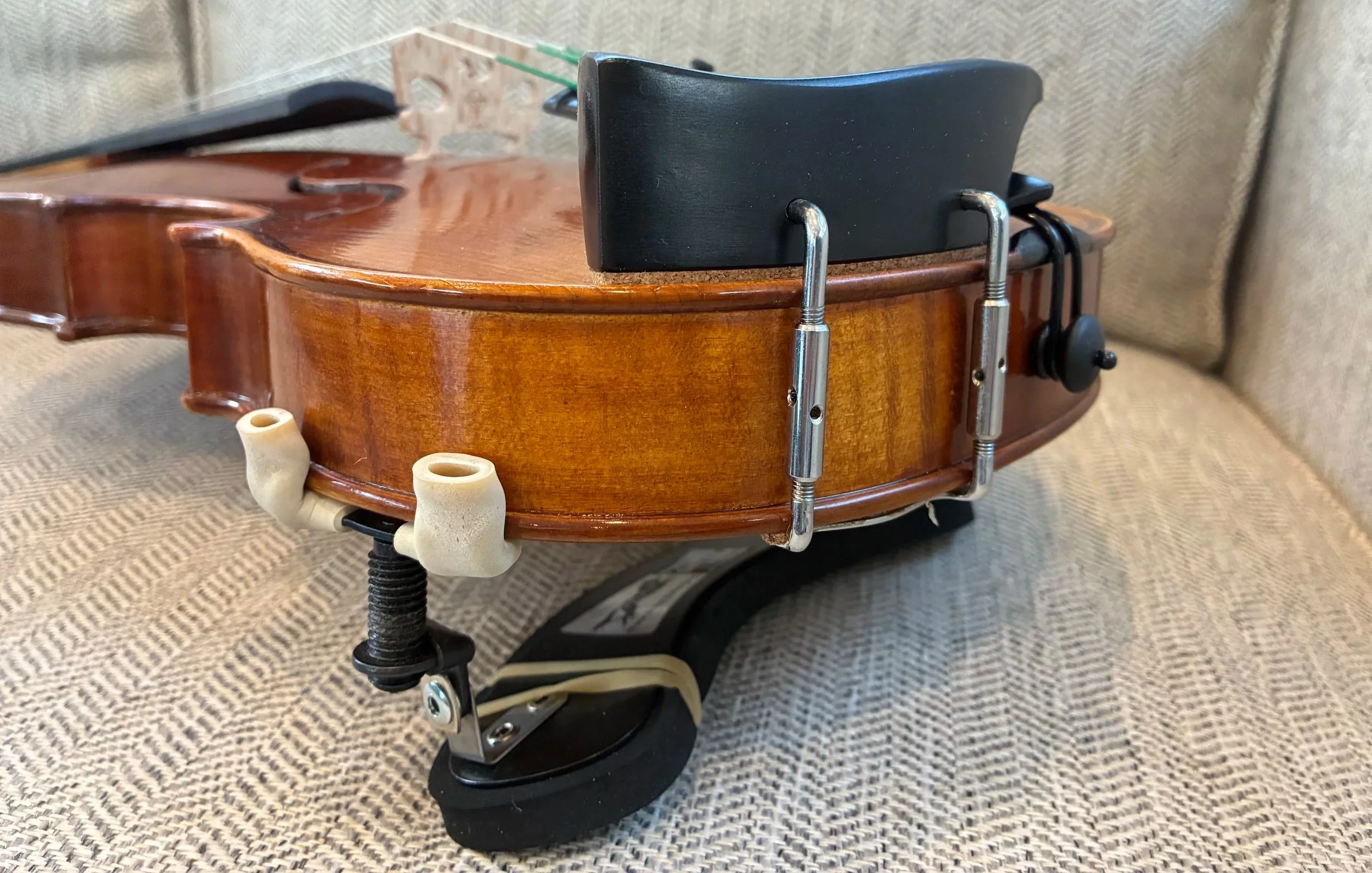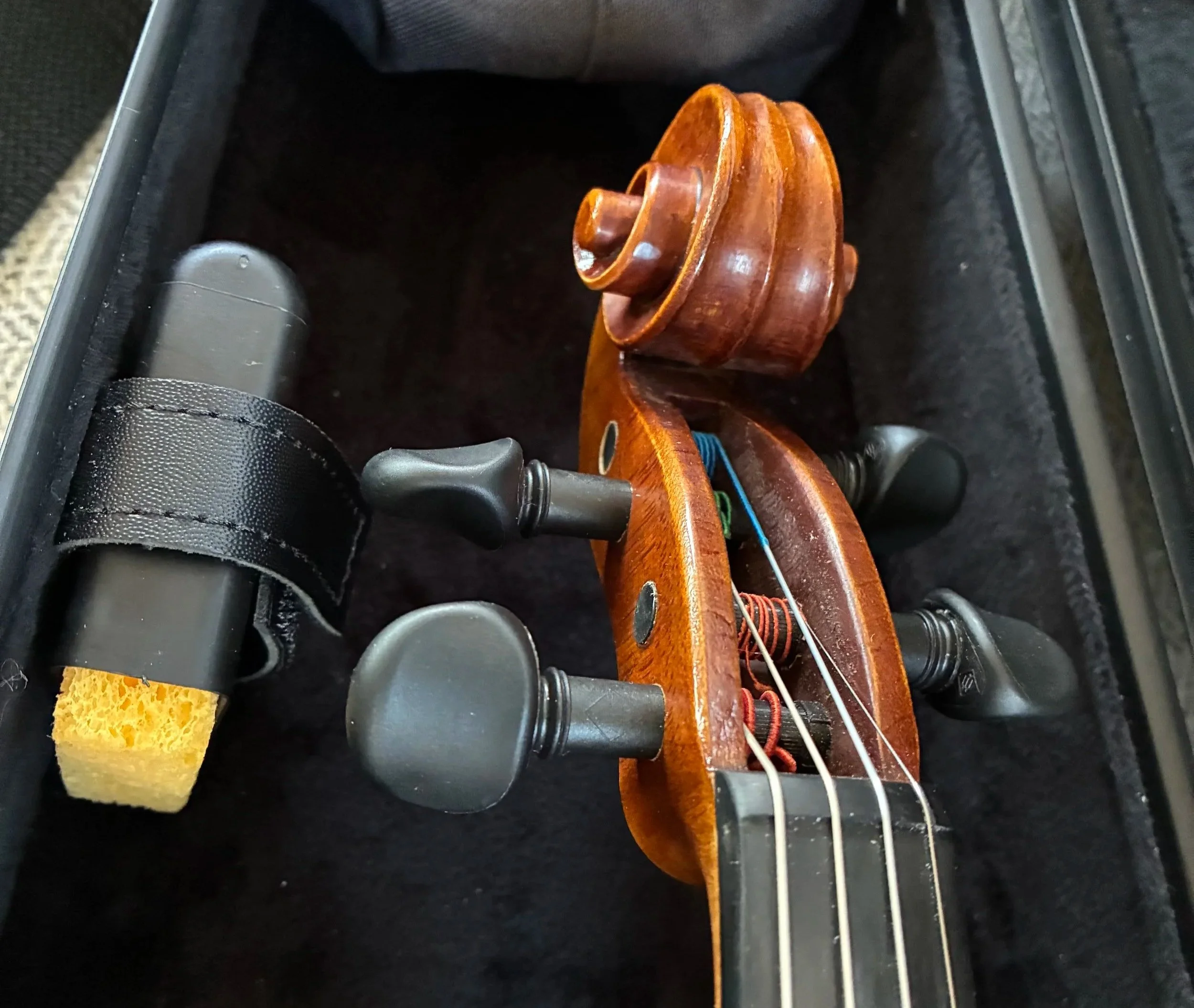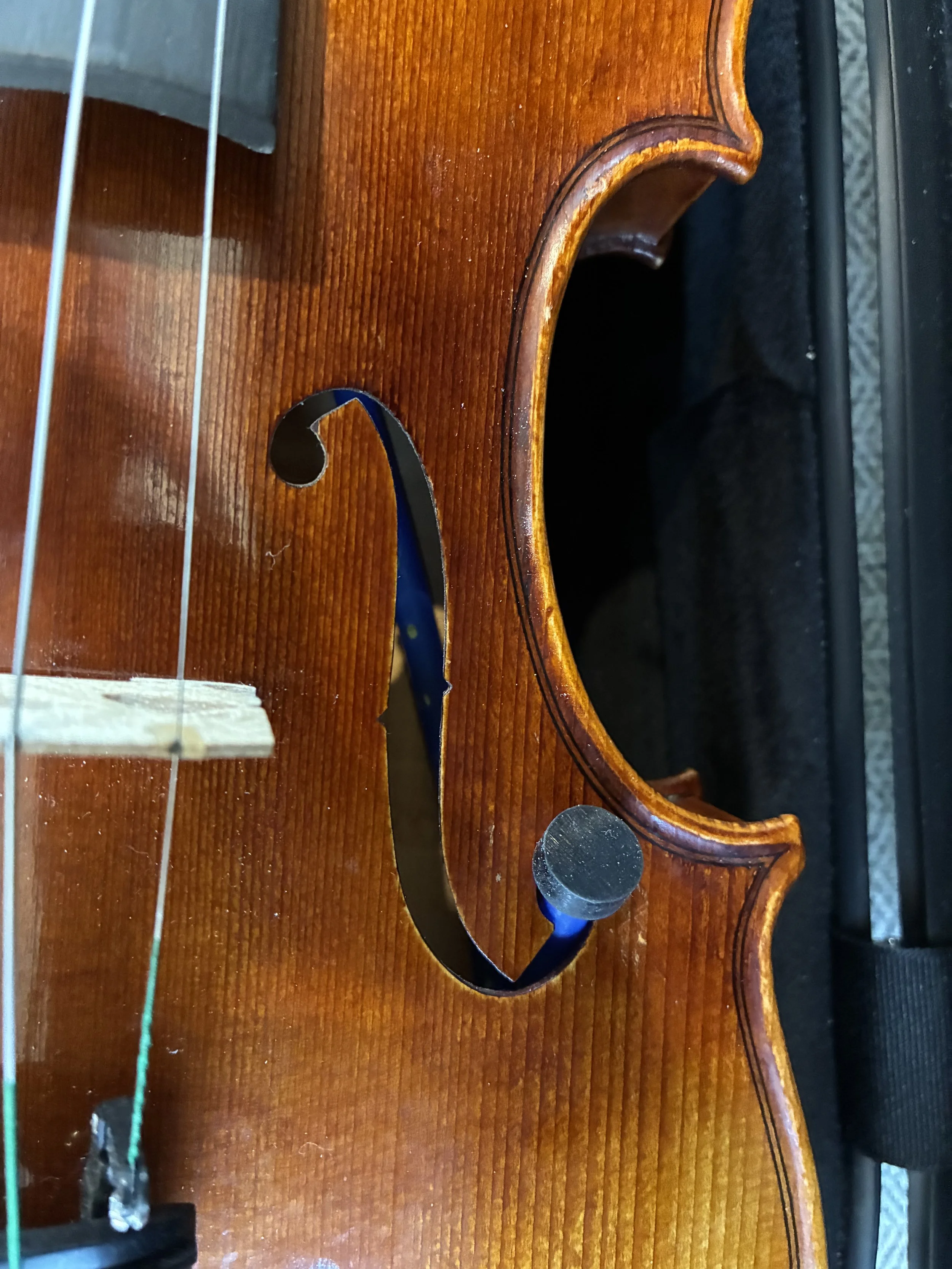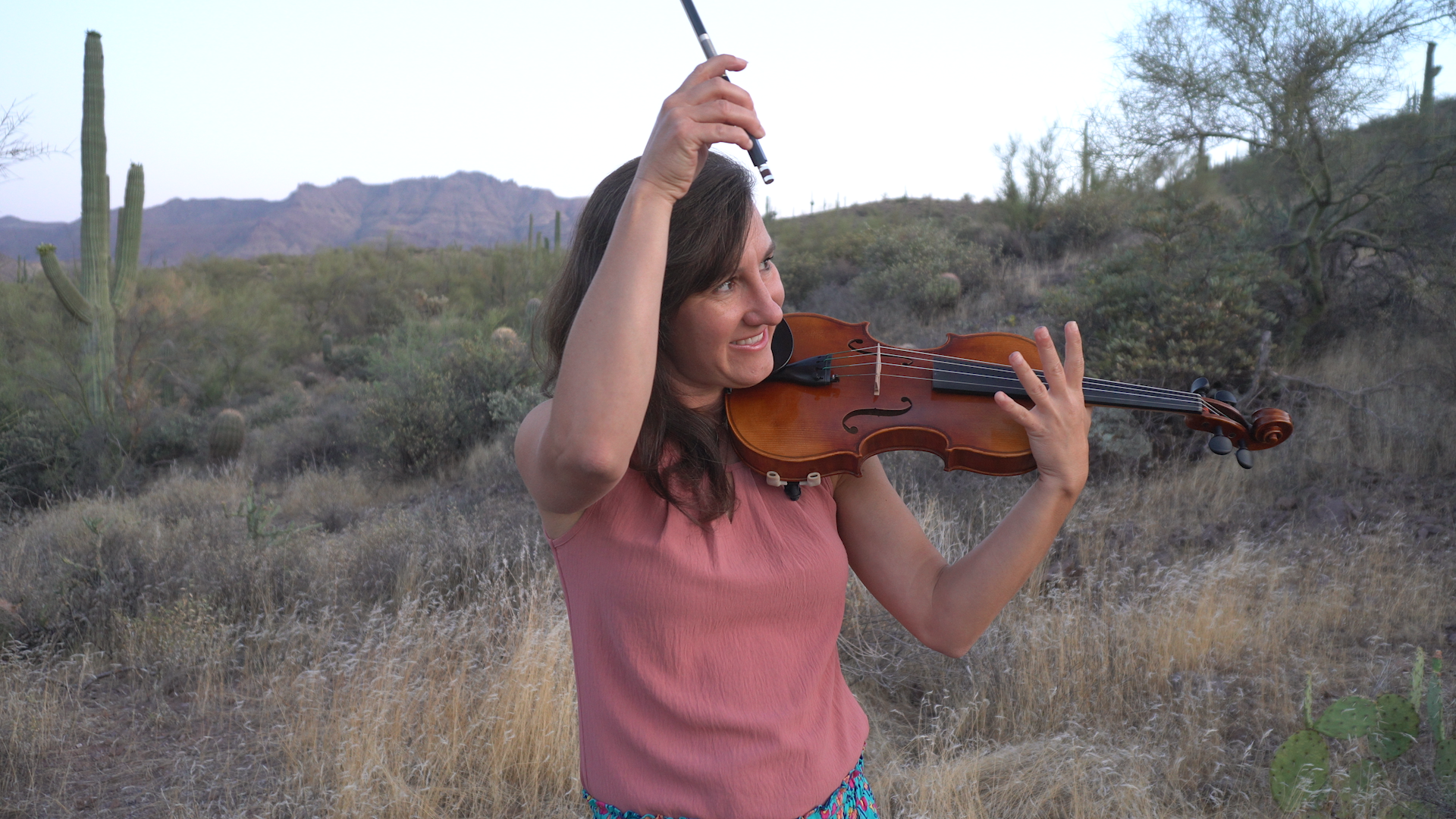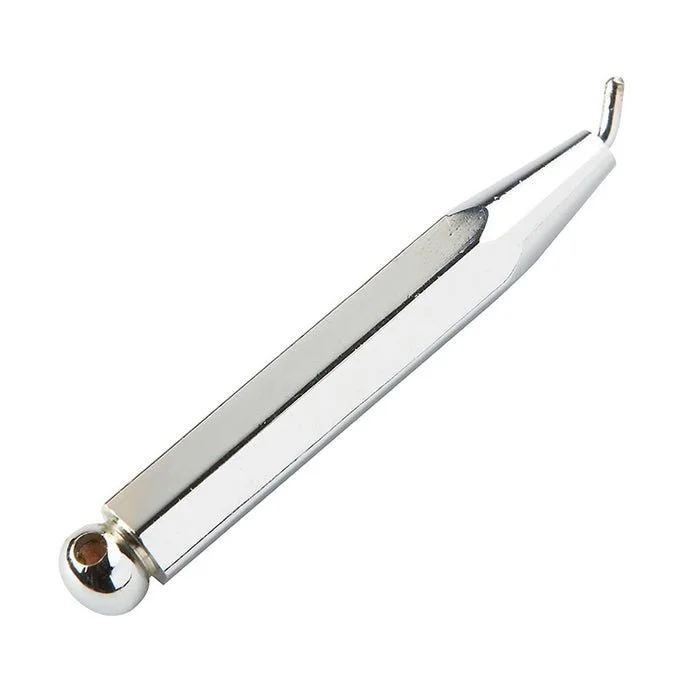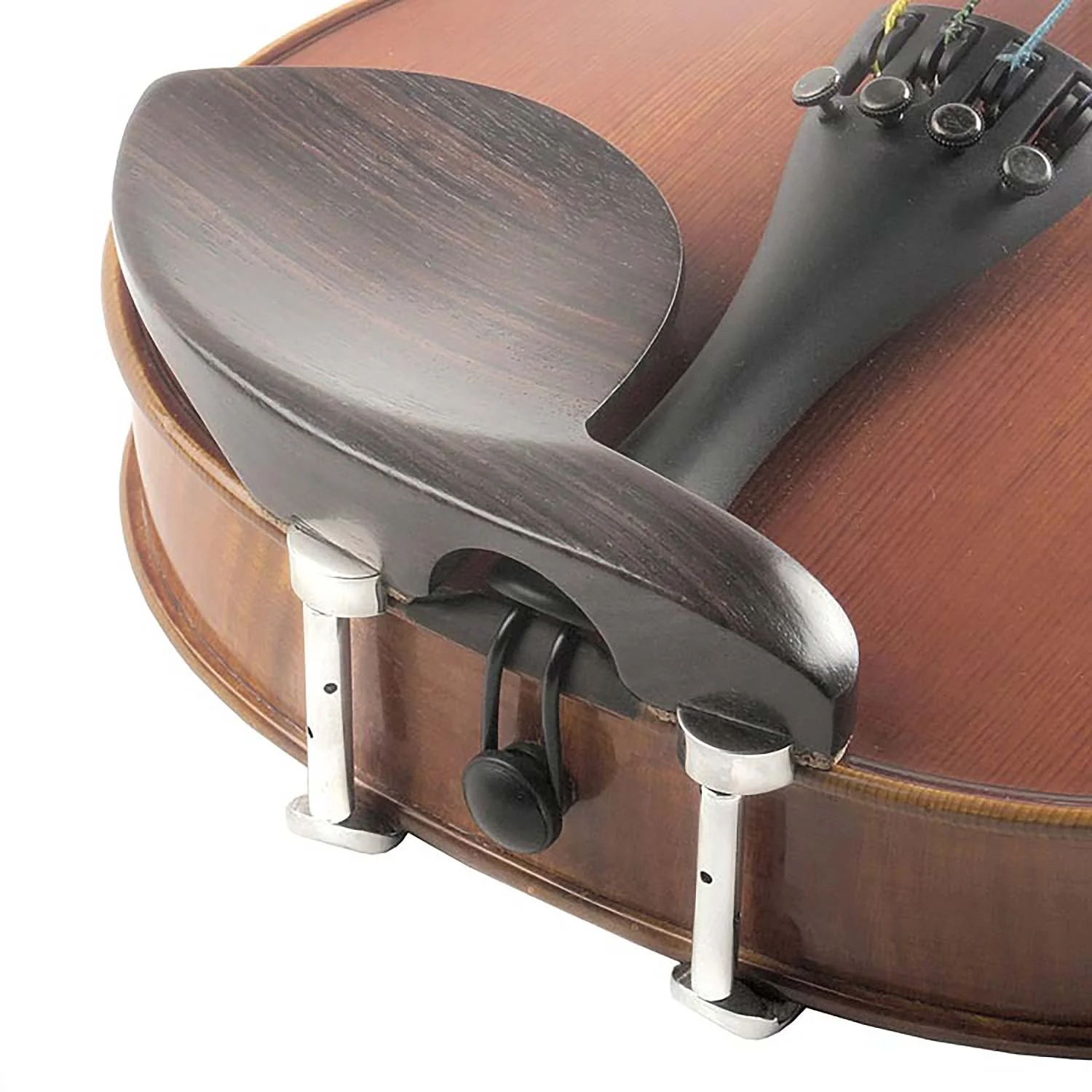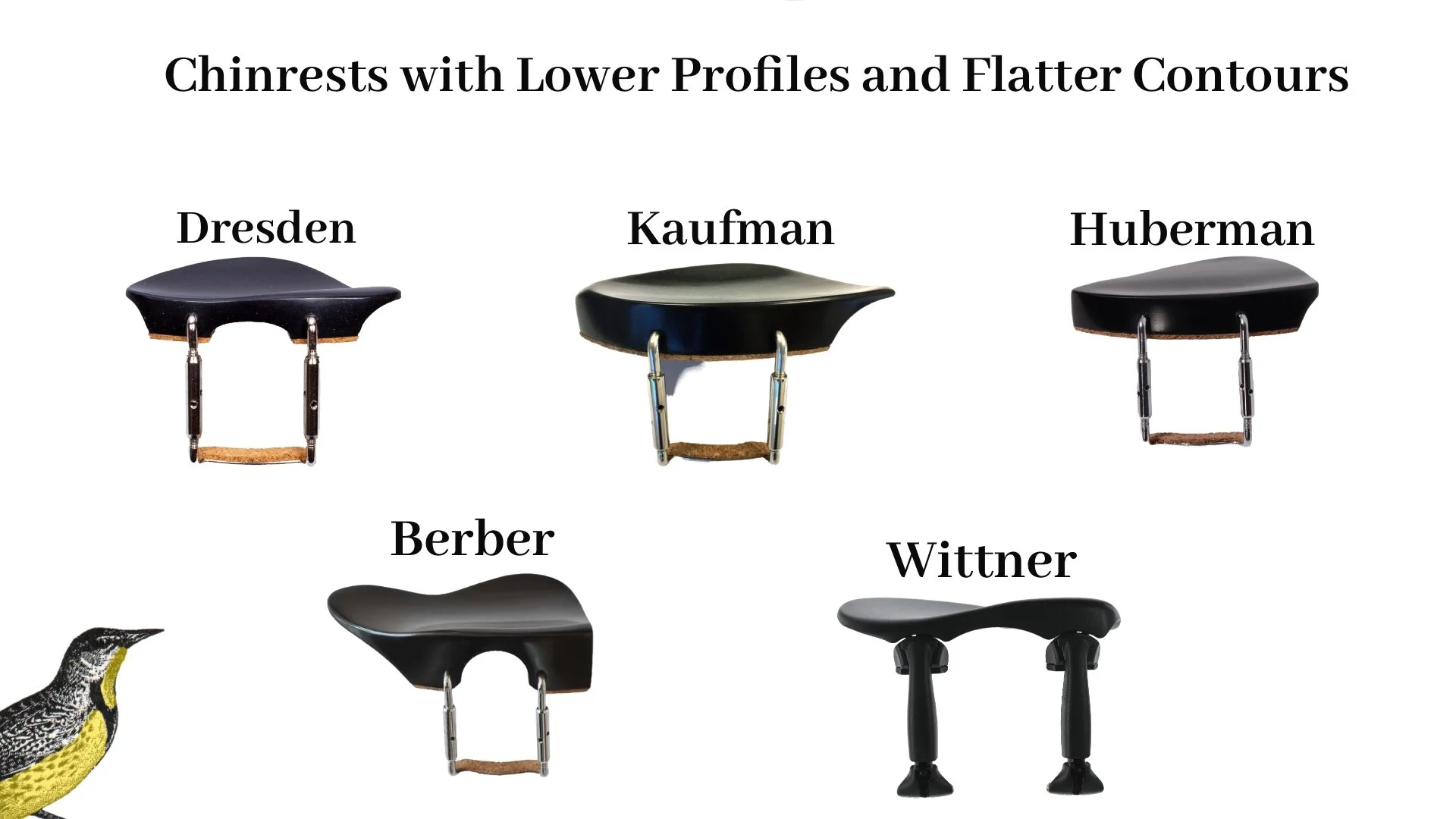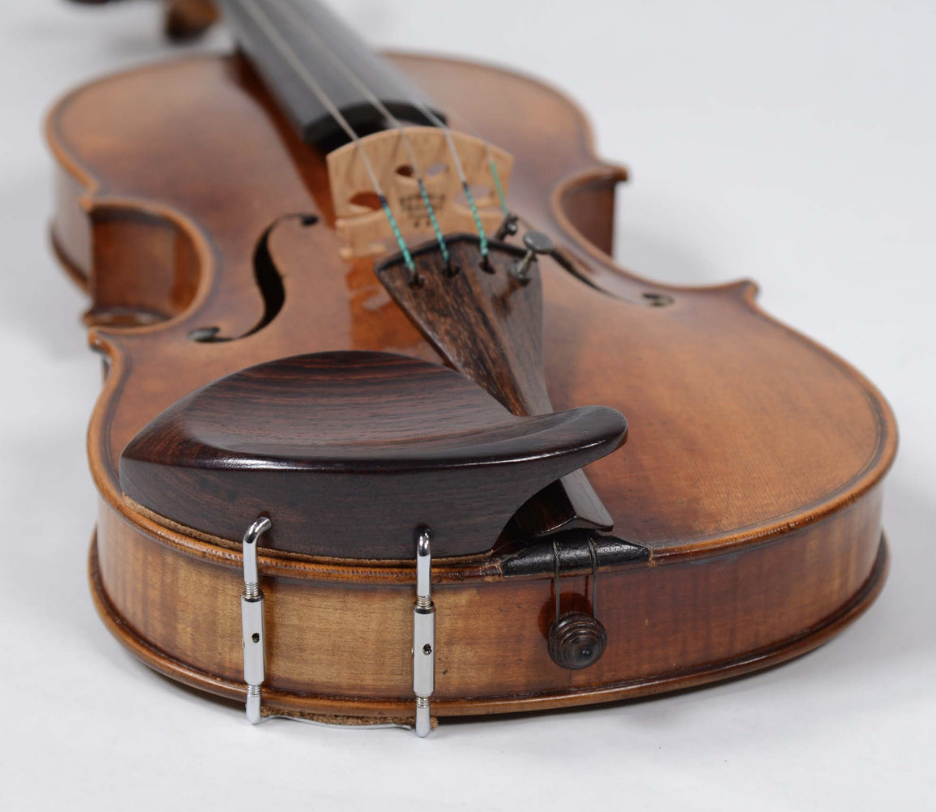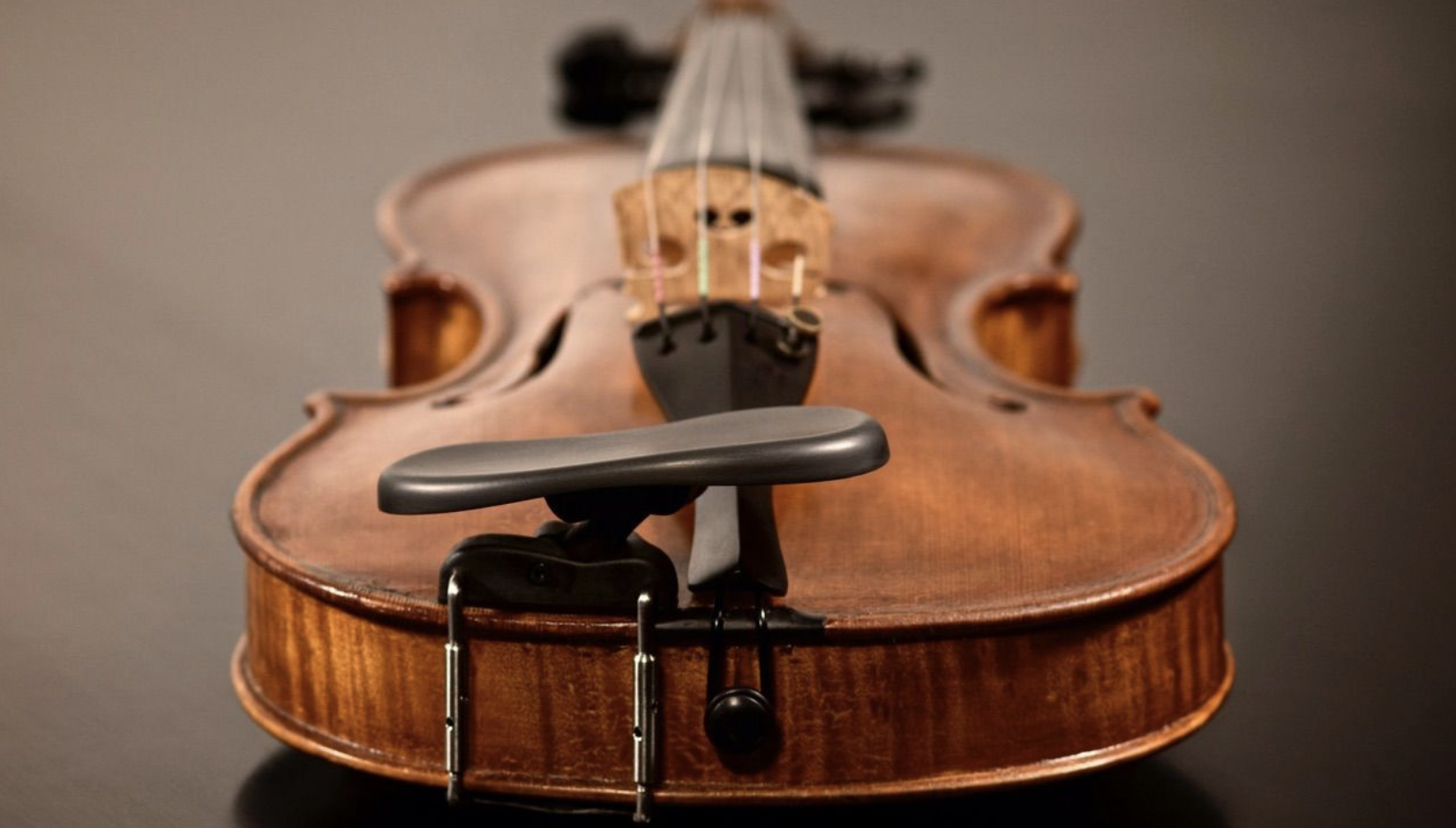The most common chinrest that comes standard on most violins is the Guarneri style chinrest. It’s probably common because it’s relatively low and has quite a bit of real estate over both the tailpiece and the cup part, allowing for both a jaw position to the left of the tailpiece and over the tailpiece. But just because it has a couple different possibilities for jaw placement doesn’t mean any of them are very comfortable. In fact, I find this chinrest pretty uncomfortable for most people. Why?
Since this is a center mounted chinrest, you can’t adjust where that cup is, and often it’s not going to match the shape of your jaw. You can try to place your jaw lower, but the rigid bump over the tailpiece can feel pretty uncomfortable under the chin.
If you want to place your chin to the left of the tailpiece, a side-mounted tailpiece will give you more options for placement. And if you want to place your chin lower over the tailpiece, a chinrest with the cup area closer to the tailpiece will be more comfortable.
After teaching hundreds of lessons and helping countless students find the right setup, I’ve found that many people prefer to place their chin lower than what the Guarneri allows.
If you have this type of chinrest, and you’re not sure if this is your problem, try this. Place your jaw lower, more over the tailpiece. For now, ignore how uncomfortable that wooden bump may feel under your jaw. (If it helps, place a towel over the bump in the tailpiece). Just focus on the placement of the violin on your shoulder and how it feels to play with your chin lower.
Chinrests and Neck Height
You don’t want to have to bend your neck down or crane your neck up to reach your chinrest. Ideally, all you have to do is turn your head slightly and rest your jaw right on your chinrest. But the violin can’t magically float there at perfect height. The problem is solved through both the shoulder rest and chinrest.
By extending the feet of your shoulder rest, you can bring the violin up closer to your face. It’s perfectly fine to extend the feet to customize your shoulder rest, but eventually as the violin gets further and further away from your shoulder, you introduce some other problems.
How Violin Height Affects the Left Hand
As the violin moves away from your shoulder, it will cause your left hand and arm to move up to reach the violin. While you may not be able to tell a difference on the E or A strings, it becomes more obvious on the G and D strings and with 4th fingers. If the violin is far away from your shoulder (due to a very extended shoulder rest), it makes it harder for your elbow to pivot forward to allow your hand to reach the G string and the 4th fingers on the D and G string. This problem just becomes more exacerbated if you have shorter arms.
I experienced this phenomenon myself recently. I bought a new violin with a different chin rest than I was used to. I had my shoulder rest adjusted fairly high to compensate for the lower than normal chinrest. I was fairly comfortable, but as I would play, I would persistently have trouble with my pinky on the G and D strings. I have pretty short hands so pinky stretches have always been an issue for me. I didn’t think anything of it, other than the fact that I probably need to work on my pinky intonation. Eventually I thought, “My fourth finger just sounds awful on the G string. I don’t ever recall being so disgusted with my little pinky.” Then I started investigating. I brought the shoulder rest down about a half of an inch and voila! It was instantly easier to reach the pinky which allowed me to play it more in tune.
The lesson is, a little bit of height in one way or the other can play a big role in your left hand technique.
So you want to keep the shoulder rest as close to your shoulder as possible, but if you have an average or longer neck, this will force you to bend your neck down to reach the violin, which is very uncomfortable. That’s where a taller chinrest comes in!
A taller chinrest can allow you to keep the violin closer to your shoulder, but places the chinrest right under your jaw. A perfect combination!
Many, but not all chinrests styles will come in extended versions. For instance, you can get a Guarneri in various heights. Although some models allow for taller heights than others. Height is measured in millimeters.
Keep in mind, you don’t have to have a very tall neck to still deal with these sorts of issues. I would say my neck is average height, but it’s an issue that’s taken a lot of trial and error for me to understand.
If you are always feeling like your neck is bending down to reach the violin, or if you have a very tall shoulder rest, a taller chinrest could be the answer to your problems.
Chinrests and Contour and Shape
Contour is a wild variable. You’ll see all sorts of shapes and bends and curves out there. Which one is right for you? Some chinrests have a very definitive cup where you jaw is placed, others are less defined. Some have a very obvious lip on the edge, some have barely any lip at all.
If the cup is less defined, you may have a little more freedom with where exactly to put your jaw. A more defined edge can help you feel like the chinrest is secure under your jaw, but it may also feel uncomfortable and sharp under your chin. A more rounded edge or no edge at all may feel smoother and less awkward.
I’m going to simplify contours into three main shapes. Flatter contours, symmetrical contours, and countours with a rise and a dip.




